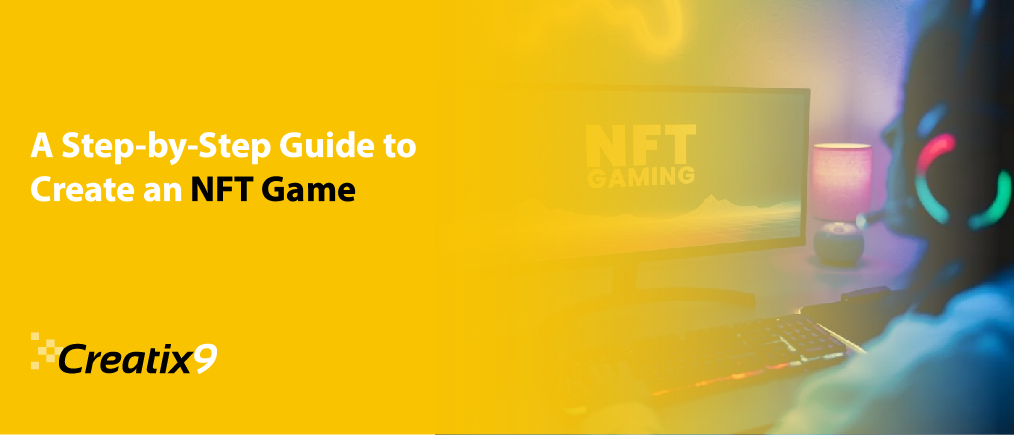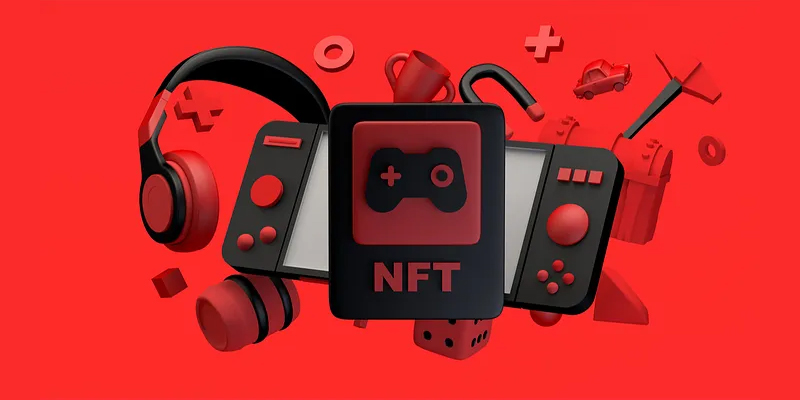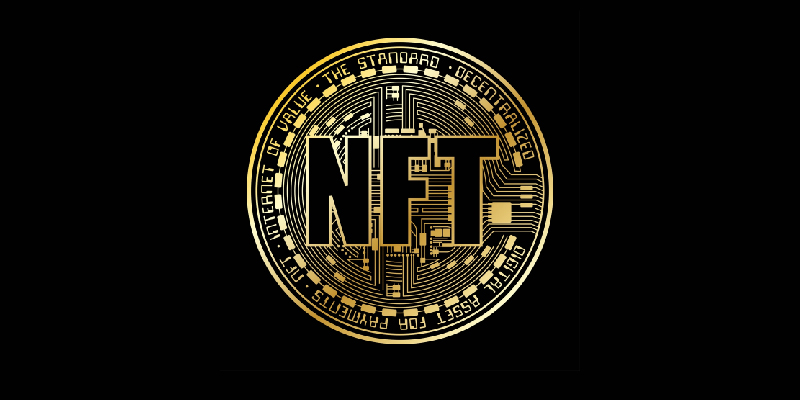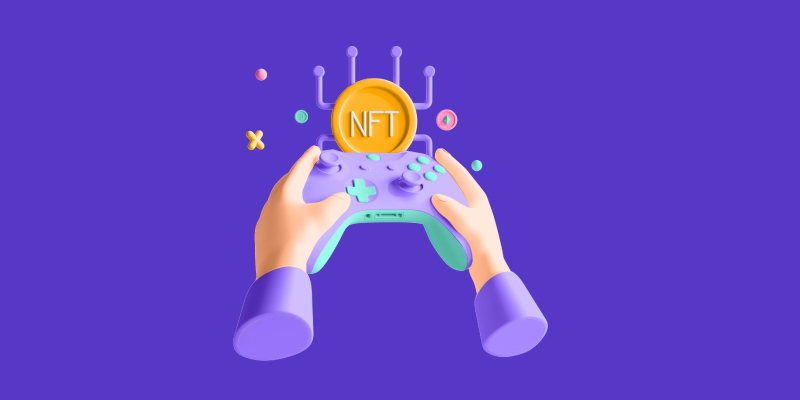
You’ve probably come across NFTs. Even if they haven’t piqued your curiosity, irrespective of their initial interest level, viral trends have a way of infiltrating all corners of our information sphere, grabbing everyone’s attention.
But since you’re here, reading this article, it’s safe to say you’re genuinely charming about what NFTs entail and how to create an NFT game.
NFTs have found utility across diverse sectors. In 2021, the Hermitage Museum make public a digital art exhibition featuring a stunning collection of 38 NFT projects. Jack Dorsey, the co-founder of Twitter, made headlines, auctioning off the NFT token of his very first tweet for an incredible $2.9 million. Meanwhile, artist Mike Winkelmann achieved a jaw-dropping milestone, raking in a historic $69 million for one of his NFT artworks.
So, what’s the buzz all about? Here comes one of the top mobile game development companies to tell you what an NFT is and why it has become the subject of keen discussion among the masses.
What are NFTs?
NFTs, short for non-fungible tokens, are unique cryptographic tokens that can’t be exchanged for similar ones, unlike cryptocurrencies (like Bitcoin,) which are interchangeable. NFTs are part of the blockchain ecosystem. Rather than centralized nodes, on numerous computers, the data is stored simultaneously.
Tokens on the blockchain represent assets. Similar to stocks in traditional finance. But they typically follow the principle of fungibility; one token is easily replaceable with another of the same type, while NFTs are non-fungible and represent one-of-a-kind digital assets.
Each NFT is unique, existing in only one copy. It cannot be split into smaller parts. All important details about its creator, buyer, and transactions are safely stored on the blockchain. Think of it as a digital certificate for something special, and only one person can truly own an NFT.
NFT Standards 
Different blockchains have various standards for creating NFTs, often based on templates within smart contracts.
- Ethereum’s ERC-721 standard is widely used for NFTs, while ERC-998 and ERC-1155 allow for combinations of non-fungible and fungible tokens. Additional standards like ERC1190 are under review for creating more complex NFTs.
- Flow blockchain, introduced due to the popularity of CryptoKitties, was explicitly designed for crypto-collectibles and games, featuring updatable smart contracts written in the Cadence language.
- Tezos, another blockchain platform, offers support for smart contracts, token creation, and a flexible, non-fungible FA2 standard for in-game elements.
Other blockchains like Palm and Solana are also entering the NFT space, each with unique features and focus, such as low transaction costs and fast completion times for Palm and Solana’s emphasis on revolutionary technologies for decentralized applications.
What Are NFT Games?
Blockchain-based entertainment with unique digital items are NFT games. Players can invest by buying, creating, and selling in-game NFTs, like skins or weapons. Ethereum’s ERC-1155 standard is famous for these games. Gamers can monetize by selling NFTs, but investment and risk are involved. Some games are free, while others use a pay-to-win model. Earnings depend on crypto and in-game assets. Players must enhance their characters, with some in-game assets reaching high values; e.g., a creature in Axie Infinity sold for $1,076,100.
How to Create an NFT Game: Preparation 
Stage
Implementing NFTs in gaming involves creating smart contracts to govern token usage. In CryptoKitties, core contracts like “geneScience” determine cat generation mechanics, with some code initially kept secret. Players devised tools to analyze trait probabilities, enhancing the chances of rare cat acquisition.
Now, let’s delve into creating an NFT game in detail.
Game Model:
NFT games fall into two main categories:
- P2E (Play-to-Earn): Players start by buying their first NFT and potentially recoup their investment. P2E games offer utility tokens as rewards, allowing gamers to purchase NFTs representing characters, perks, or power-ups.
- F2P (Free-to-Play): Fewer in number, these games require no initial cost, enabling immediate play but typically offering lower income potential. Utility tokens might not be part of F2P games.
Earning through utility tokens is more stable than relying solely on valuable NFTs, which often depend on chance. For the support of newcomers who can’t or won’t invest, scholarship funds are established, sponsored, and trained by experienced players, who then share profits with them.
Game Design
Choose the genre; NFT games come in various genres, such as strategy, combat, adventure, simulation, role-playing, or card games. Conduct competitive analysis to identify exciting features from similar games on and off the blockchain; avoid copying but incorporate appealing elements.
Document game details, including milestones, character system, victory conditions, and monetization, to prevent team misunderstandings; proceed to design and art creation.
Indeed, game art is an inherently creative realm where artistic freedom thrives. However, it’s crucial to remember one critical insight.
Notably, the current pinnacle of NFT gaming popularity is Axie Infinity, where players collect, breed, and trade fantastical NFT creatures.
CryptoKitties, a pioneering example, also introduced animal breeding mechanics in games. These successful games share a common trait: vibrant, cartoon-style art featuring adorable animals. The universal appeal of cute animals is undeniable and should be considered noteworthy in your game’s design.
Web or Mobile
Unlike server-based apps, decentralized applications (dApps) run on blockchain tech, with backend data and code stored in peer-to-peer blockchains. Consider whether your users will interact with your game through a web browser or a mobile app:
- Web apps are versatile and accessible from any device worldwide.
- Mobile apps offer faster performance with potential for more features but may be costlier to develop.
Mobile apps can be native or cross-platform:
- Native apps are OS-specific, with access to smartphone functions.
- Cross-platform apps are simpler, faster, and cheaper, functioning on all OS.
Consider whether you need smartphone features. Note that AppStore has specific requirements for listing games.
- Hybrid apps, acting as both mobile and web apps, may lead to progressive web applications (PWAs):
- PWAs offer near-native functionality without AppStore hassle.
- PWA benefits include push notifications (except iOS), offline use, limited smartphone feature access, and desktop shortcuts resembling native apps.
Hint: For your first NFT game, a web app is a straightforward choice, offering broad accessibility without platform-specific complexities.
In search to craft a leading mobile game in Dubai? Look no further! Connect with Dubai’s premier mobile app Development Companytoday for outstanding results.
Suitable Technology
To start your NFT journey, leverage open-source resources. Explore GitHub, where you can find ready-made NFT games and templates that offer valuable insights into the intricacies of these games.
If GitHub seems unfamiliar, invest time in familiarizing yourself with it. GitHub is the foremost project and code version management system, facilitating global collaboration, project planning, and progress tracking.
One prominent ecosystem for dApp development is the Truffle Suite. This comprehensive smart contract development environment and open-source toolkit specialize in Ethereum blockchain applications. Notably, Truffle tools are utilized by major companies like Microsoft, Amazon, and VMWare. The suite offers a standardized testing environment and an asset pipeline for creating robust smart contracts. It comprises three key components:
- Truffle: It’s like a digital workshop designed for making and testing smart contracts on Ethereum.
- Ganache: It is a tool that helps you create a safe and predictable space to build and test decentralized apps on your own computer, like a private Ethereum playground.
- Drizzle: A collection of frontend libraries utilizing the Redux store for building more predictable and manageable interfaces.
While Truffle Suite traditionally focused on Ethereum-based blockchains and Ethereum Virtual Machine, it recently expanded support to Tezos, marking its first foray beyond Ethereum’s ecosystem.
Another dApps development platform worth noting is Moralis. It offers infinitely scalable server infrastructure, removing significant development obstacles. Moralis provides a fully managed backend infrastructure, allowing developers to concentrate on frontend and user interface development.
Frontend Stage
JavaScript is essential for creating the user interface frontend. Frameworks like React and Vue are suitable options for developing the front end. Angular may be complex for beginners.
Truffle Suite was initially integrated with React and now supports Vue through a plugin. Netlify is an excellent platform to host the front end, particularly for solo developers or small teams, and it’s free.
Wallet
Cryptocurrency resides not in a physical or digital wallet but in the blockchain. Crypto wallets, software, or hardware store and manage digital currency securely. Ensure the chosen wallet has private and public keys and multiple security layers. For instance, CryptoKitties uses MetaMask, a non-custodial wallet, as a Chrome browser extension.
Smart Contract
Smart contracts are like digital agreements that automatically run when certain conditions are fulfilled on the blockchain. To access their NFT, users’ addresses are processed: the front end receives the user’s address, sends it to the smart contract, and gets the NFT address owned by the user. Use Web3.js, the official Ethereum blockchain library, to work with smart contracts abstractly.
Solidity is the programming language for writing smart contracts, offering Turing completeness and a well-defined code format. Thoroughly test contracts before deploying them, as fixing bugs post-production can be costly or lead to critical system failures.
Fundamental smart contract properties include transparency, immutability, and distribution, allowing blockchain users to access, audit, and verify contract data.
The Backend Stage
Our previous discussions established that the smart contract manages the URL linked with the desired NFT. Using this URL, the frontend requests the backend to retrieve the metadata of the NFT. The backend then promptly dispatches the metadata, encompassing the NFT’s name, address, and identifier, back to the front end.
Subsequently, the front end can issue another request to the server, providing the NFT URL. This action enables the interface to render the available data, allowing users to view their NFT’s name and image effortlessly.
Node.js is our choice for constructing the backend—a versatile software platform that compiles JavaScript into server-side machine code, seamlessly facilitating the backend development process.
The Testing Stage
For rigorous testing of our NFT game, we harness specialized test blockchains like Rinkeby. Ganache by Truffle proves instrumental in crafting a simulated blockchain environment. Our testing strategy encompasses the following facets:
- Functional Testing:This phase scrutinizes the game’s holistic functionality, encompassing data transfer, block and chain metrics, and evaluating various requirements and processes.
- Security Testing: A pivotal step to identify and rectify potential threats to the blockchain system, ensuring its robustness and integrity.
- UI Testing: Vital to affirm the game’s smooth workflow and flawless functionality, this stage also focuses on aesthetics—examining fonts, colors, graphics, and more to ensure an exceptional user experience.
- Integration Testing: This stage rigorously assesses the interconnections between software components, guaranteeing seamless collaboration.
- API Testing: A critical aspect of the testing regimen entails verifying the flawless communication between software components and external APIs, ensuring accurate processing of requests and responses within the system.
Conclusion
With these insights, you now possess a foundational understanding of how to embark on the journey of creating an NFT game. Significantly, focusing more on the sheer quantity of NFT assets rather than contemplating their value to players is paramount. Will these assets entice players to invest in them, and what motivates their interest?
Let’s collaborate if you aspire to stay abreast of evolving trends but find yourself pondering the potential NFT features that could captivate even the most discerning players. Our expertise in NFT game development spans various dimensions and remains continuously updated. We boast a track record of crafting distinctive NFT assets across diverse gaming genres.
Having delved deep into the NFT phenomenon, our name comes among the top mobile game development companies in Dubai; we stand prepared to offer you an array of innovative options for leveraging it within gaming.
As a prominent software development company in Dubai, you don’t need to stress out; we all perform development work for you.

